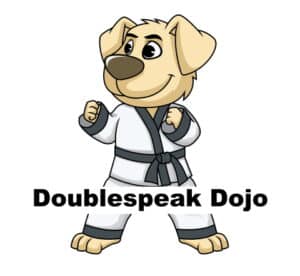Coming from any English speaker’s perspective, Japanese is no doubt an odd and quirky language. Yet, it doesn’t lack in people trying to learn it. Actually, it’s a very popular choice for a second language, mostly due to its unique nature. As such there are a lot of questions about the language, a popular one being:
Is Japanese phonetic?
Japanese is partially phonetic with its writing system, due to its three separate forms. Since most languages only have one writing style, they can be determined as simply phonetic or not. Yet, Japanese has Kanji, Hiragana, and Katakana. Kanji is not phonetic, but Hiragana and Katakana are.
Most languages don’t have different writing forms, and this makes it hard to understand how Japanese’s writing systems interact with one another. What more can we learn about Kanji, Hiragana, and Katakana? And in turn, what more can we learn about the Japanese language as a whole?

Contents
Is Japanese Logographic Or Phonetic?
If Japanese is partially phonetic, could we still classify it as phonetic overall? With one writing form that isn’t phonetic in Japanese, what would it be then? This leads to a common question regarding whether Japanese is a logographic language or a phonetic one. Thus, we ourselves should ask:
Is Japanese logographic or phonetic?
The Japanese writing system is both phonetic and logographic as a whole. Separated into three writing forms, Japanese has two that are phonetic, and one that is logographic. Unlike most other languages, Japanese has the chance to be both phonetic and logographic at the same time.
This puts Japanese in a very special situation, since you could accurately describe it as both being phonetic and logographic (we’ll dive into what this means later).
Yet, we come back to the same question: could Japanese still be called phonetic, even if it is only partially?
Is Japanese A Phonetic Language?
The main dilemma of our overall topic whether or not Japanese is phonetic deserves an in-depth answer. We know it is sort of phonetic, but could it be a problem if we say it is as a whole? Is Japanese a phonetic language?
Japanese is a phonetic language, albeit only in part. While Kanji is not phonetic, Japanese’s other writing forms of Hiragana and Katakana are. This leaves Japanese to be both phonetic and not phonetic, especially since all three forms are used commonly without clear favoritism.
You would be perfectly correct in describing it as phonetic. While it is fine to point out its unique nature, one can legitimately consider Japanese to be phonetic without any problem.
I went into what a phonetic language is, and what popular languages are or are not phonetic, in my article Phonetic Language Meaning And Usage. In this article, I actually mention Japanese being both phonetic, and not so phonetic.
If we now know Japanese to be concretely phonetic, how is it logographic? Or, a more important question to ask: what is a logographic language?
The Meaning Of Logographic, Pictographic, and Phonetic Languages (And How This Relates To Japanese)
If we now know Japanese is both phonetic and logographic, what does that mean exactly? First off, what do the terms logographic and phonetic even mean in the first place?
Commonly mistaken for pictographs, logograms are symbols that represent a word or phrase, with languages like Japanese using them. Whereas a phonetic language is one where a word’s pronunciation can be known by its spelling, and Japanese can at times be this way.
There are those who say Japanese is a pictographic language, but this is not the case. Pictographs are illustrations to depict the meaning of a word or phrase, and Japanese does not use them. In other words, a drawing to show what you mean.
The definitions for these terms are as follows:
- Logogram: (Definition provided by Merriam-Webster)
- a letter, symbol, or sign used to represent an entire word
- Pictograph: (Definition provided by Lexico)
- a pictorial symbol for a word or phrase.
- a pictorial representation of statistics on a chart, graph, or computer screen.
- Phonetic: (Definition provided by Merriam-Webster)
- representing speech sounds by means of symbols that have one value only
- of or relating to spoken language or speech sounds
Japanese is partially phonetic and logographic. Thus, it has thousands of symbols meaning either a word or phrase, and has phonetic writing systems too. Naturally we should dive deeper into the Japanese writing systems of Kanji, Hiragana, and Katakana next.
If you are looking for information regarding Japanese, or general topics in language learning, then feel free to check out some of my other articles.
- French Vs Japanese: Which Is Easier And More Useful?
- Is Japanese Fun to Learn?
- What Does It Mean To Be Less Than Proficient In A Language?
What Parts Are Phonetic In The Japanese Writing System?
If Japanese can be both phonetic and logographic at the same time (which is pretty weird), what are the writing systems that make this possible?
The three writing forms in Japanese are:
- Kanji
- Hiragana
- Katakana
What can we learn about these individual forms, and in turn learn about Japanese?
Is Japanese Kanji Phonetic?
Starting off with Kanji, what can we learn about it? How is it used in Japanese? Is it commonly used in daily life? And more importantly to our overall topic: is Japanese Kanji phonetic or logographic?
In Japanese, the writing form of Kanji is not phonetic, but logographic. This means that one cannot know how to say a particular word alone just by viewing the Kanji. That is made possible by the other writing forms in Japanese. Despite being a building block in writing, Kanji is not phonetic.
It goes without saying that anyone from a western background will find it hard to wrap their mind around using thousands of symbols to mean words or phrases. Instead of an alphabet like we have in English, Kanji is not alphabetic.
One crazy fact: Japanese is said to have upwards of 80,000 different Kanji symbols! However, in actuality they only use a few thousand (only a few, I know) in daily life referred to as Jōyō Kanji.
Unfortunately, Kanji does intimidate many when first trying to learn Japanese, due to the vast number of symbols it has being fairly challenging to memorize.
As is discussed in this article, the problem of memorization is a real issue for Japanese. Due to Kanji’s requirement of learning so many different symbols it is labeled as one of the hardest languages for English speakers to acquire.
The same goes for Chinese’s writing system of Hanzi, or more appropriately the dialects of Mandarin, Cantonese, and others. Interestingly, Hanzi and Kanji are the same thing, but used differently by the two cultures. The same or similar symbols are used, but the meaning and pronunciation can vary wildly.
Why this is the case, is something for another article, just note that Kanji is Japanese using the Chinese writing system of Hanzi in their own way.
Is Kanji The Predominant Writing Form In Japanese?
Some might wonder how it measures up against its “brethren” in regards to how often it is used. Could Kanji be considered as the predominant writing form? And, in turn meaning that Japanese is predominantly not phonetic.
Kanji is commonly used in Japanese writing, partially since it serves as a sort of building block for Hiragana and Katakana. That being said, it is not used any more than Hiragana, and maybe even Katakana.
Due to Kanji being so difficult, children exclusively learn Hiragana and some Katakana. Hiragana is popular for more informal writing.
I go into all about how Kanji is used in much more detail, in my article: What Is Kanji Used For In Japanese Writing?
Is Japanese Hiragana Phonetic?

Moving on to Hiragana, the previously mentioned popular form for children and informal writing, what can we learn about it? Is Japanese Hiragana phonetic or logographic?
The popular writing form of Hiragana in Japanese is both phonetic and alphabetic. With a total of 46 basic kana, Hiragana is commonly used among children and informal writing. Due to the difficulty of Kanji, Hiragana’s phonetic and alphabetic nature helps children learn writing.
While Kanji serves as a building block, Hiragana can serve to augment or even completely replace Kanji symbols.
The Differences Between Hiragana And Kanji
The big difference between Hiragana and Kanji is that one is alphabetical, and the other is not. Kanji is logographic, thus it obviously has no alphabet.
Hiragana has an alphabet, and this in turn really allows it to be phonetic. This is also why it is considered to be so much easier to learn than Kanji.
Like with Kanji, I go into how Hiragana is used in my article: What Is Hiragana Used For In Japanese Writing?
Is Japanese Katakana Phonetic?
Having discussed both Kanji and Hiragana, it would only be right to move on to Katakana. With Kanji not being phonetic, and Hiragana being the opposite, this leaves us to ask: is Japanese Katakana phonetic or logographic?
Akin to Hiragana as opposed to Kanji, Katakana in Japanese is phonetic and alphabetic. Regarding mainly foreign words and phrases, one can generally know the pronunciation of a kana by the way it is written with Katakana. Both Katakana and Hiragana are what make Japanese partially phonetic.
Like with Hiragana, Katakana can either affect a Kanji symbol or even entirely replace it. However, it mainly sticks to foreign words, and concepts.
Hiragana and Katakana are similar, but they both have their own unique uses. While all three forms have their different pluses and minuses, they all complement each other.
Essentially, there is no “King” among the writing systems in Japanese. They all are used fairly equally due to the roles that they play.
Japanese Phonetics Compared To English
If we know a lot more regarding Japanese, and how it is both phonetic and logographic, the only thing left is to compare it to English. As most of us speak English natively, it would only be right to ask: how does Japanese phonetics compare to English?
Japanese is considered to be more phonetic than English, but they are both less phonetic than most other languages. English is a phonetically inconsistent language, this means that it has many exceptions. Whereas Japanese has one part of its writing system that is not phonetic.
English is well known as being incredibly inconsistent with its phonetics. So much that one rarely can look at a word’s spelling alone and pronounce it 100% correctly in English.
While Japanese is phonetic, one must admit the fact that Kanji remains non-phonetic. This makes it overall less phonetically consistent (at least when compared to other languages).
The Final Talking Point On Whether Japanese Is Phonetic…
To wrap things up, Japanese is a phonetic language in part, with two of it’s writing systems being phonetic and the other being logographic.
These system are:
- Kanji
- It is not phonetic.
- Hiragana
- It is both phonetic and alphabetic.
- Katakana
- Like Hiragana, it is alphabetic and phonetic.
Want to know more about Japanese, or other topics relating to language learning? Then check out my articles down below.
